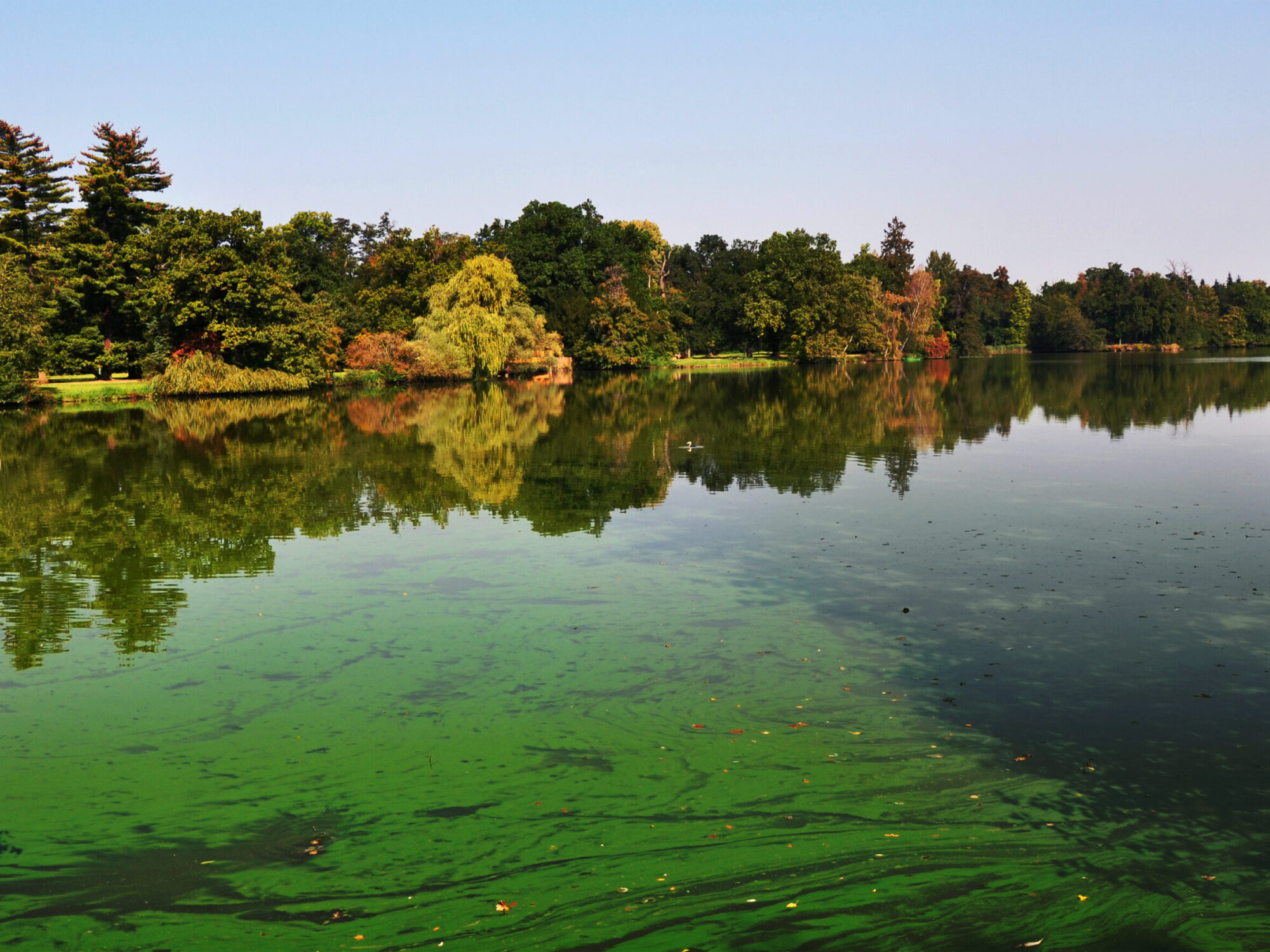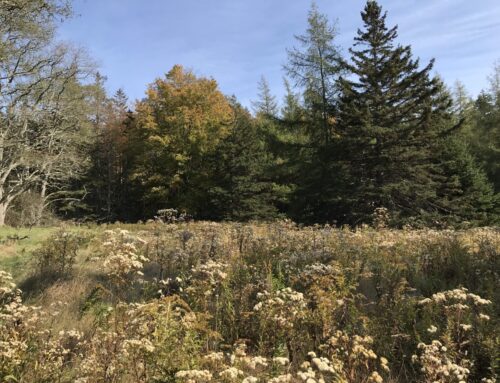Fertilizers and Cyanobacteria Blooms
October 4, 2025

Phosphorus is a vital nutrient for plant growth and one of the three main ingredients in most fertilizers. However, when fertilizers containing phosphorus are over-applied or misused, excess phosphorus can wash into nearby lakes, ponds, and streams — fueling the growth of algae, including toxic cyanobacteria (blue-green algae).
Algae blooms can pose serious environmental and health risks. They not only discolor the water and produce foul odors but may also release toxins that are dangerous to humans, pets, livestock, and aquatic life.
How Phosphorus Reaches Water Bodies:
The most common way phosphorus enters water is through runoff and erosion. Phosphorus easily binds to soil particles. When rain or irrigation causes soil erosion, those phosphorus-rich soil particles are carried into storm drains, streams, rivers, and eventually into lakes and ponds.
What Happens During a Bloom:
When excess phosphorus enters a freshwater system, it can fuel rapid growth of algae, causing harmful algae blooms. NH has seen a dramatic increase in the frequency and severity of harmful algae blooms in recent years, disrupting ecosystems and recreational use of our waters. As blooms dies off, bacteria begin breaking down the dead algae, a process that consumes large amounts of oxygen. This leads to hypoxia (low oxygen conditions), which can suffocate fish, insects, and other aquatic life, creating so-called “dead zones” where few organisms can survive.
What You Can Do:
- Apply Fertilizer Responsibly. Everyone who uses fertilizer plays a role in protecting water quality. Here’s how you can help reduce phosphorus pollution:
- Test your soil before fertilizing. The UNH Soil Testing Program analyzes thousands of samples annually and finds that most soils in the state already have high or very high levels of phosphorus.
- Only apply phosphorus when necessary. If your soil already contains enough phosphorus, choose a fertilizer with zero phosphorus content—indicated by a “0” in the middle number on the label (e.g., 21-0-24).
- Be mindful with compost. Compost is also rich in phosphorus and can contribute to runoff. Avoid applying it near water bodies, storm drains, or in areas prone to erosion.
- Landscape design also plays an important role in protecting water from nutrient pollution. Consider features that divert, collect, and infiltrate runoff, keeping water, soil, and nutrients on site.
UNH Extension provides resources and educational programs to help you employ best practices. Contact us, amy.papineau@unh.edu. ~ by Amy Papineau, unh Extension



